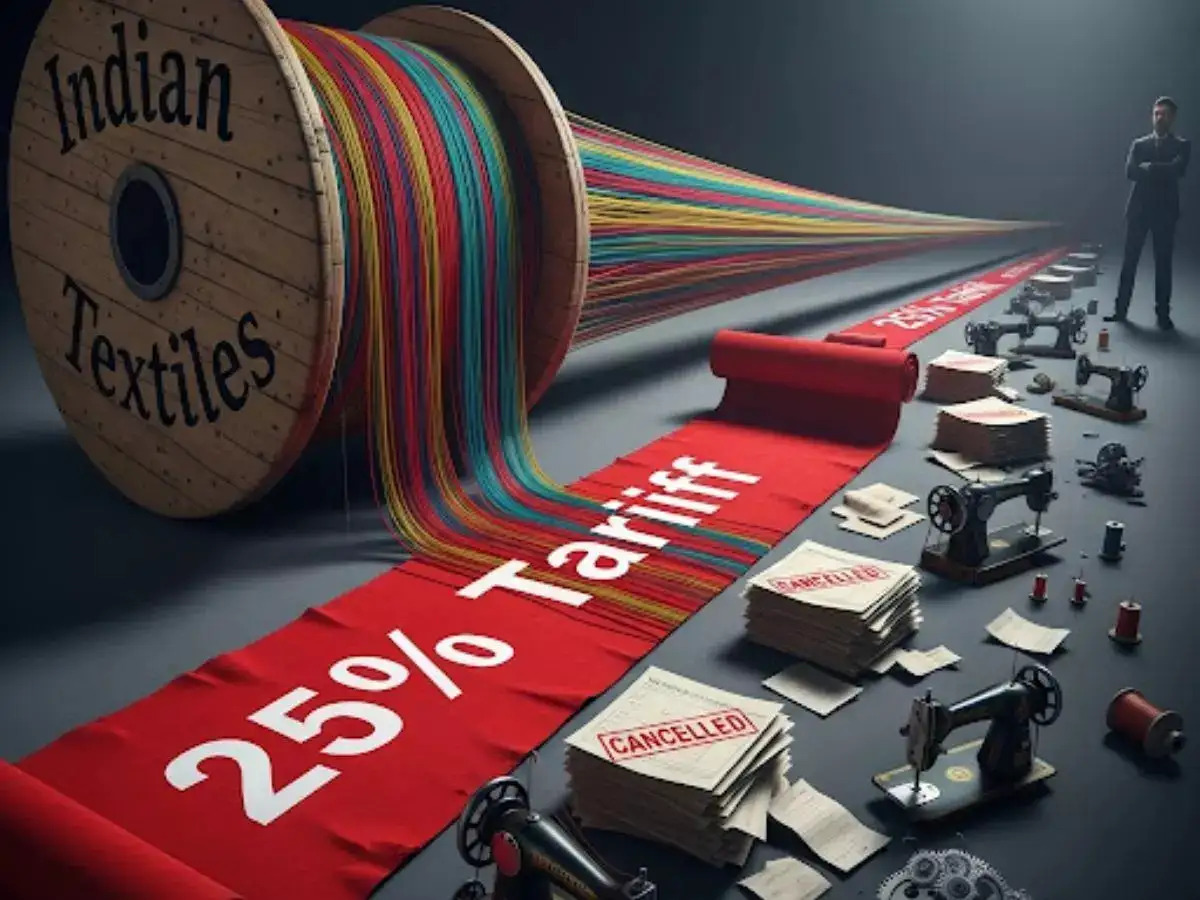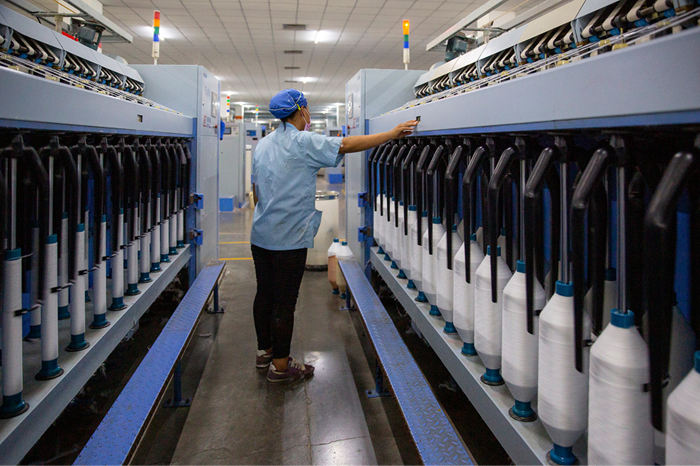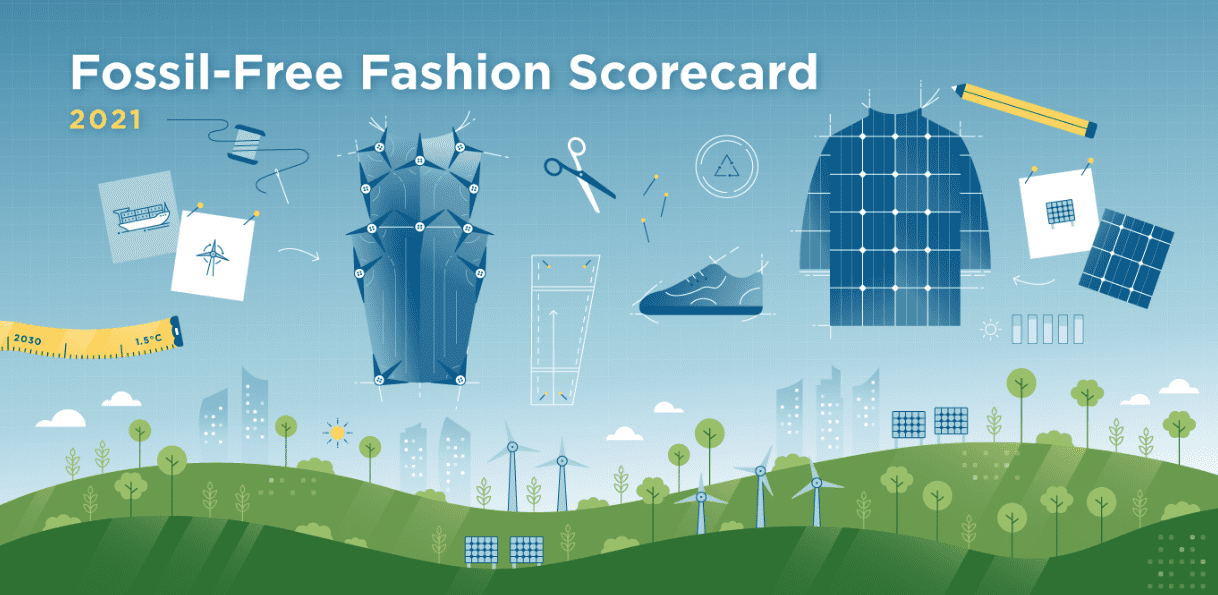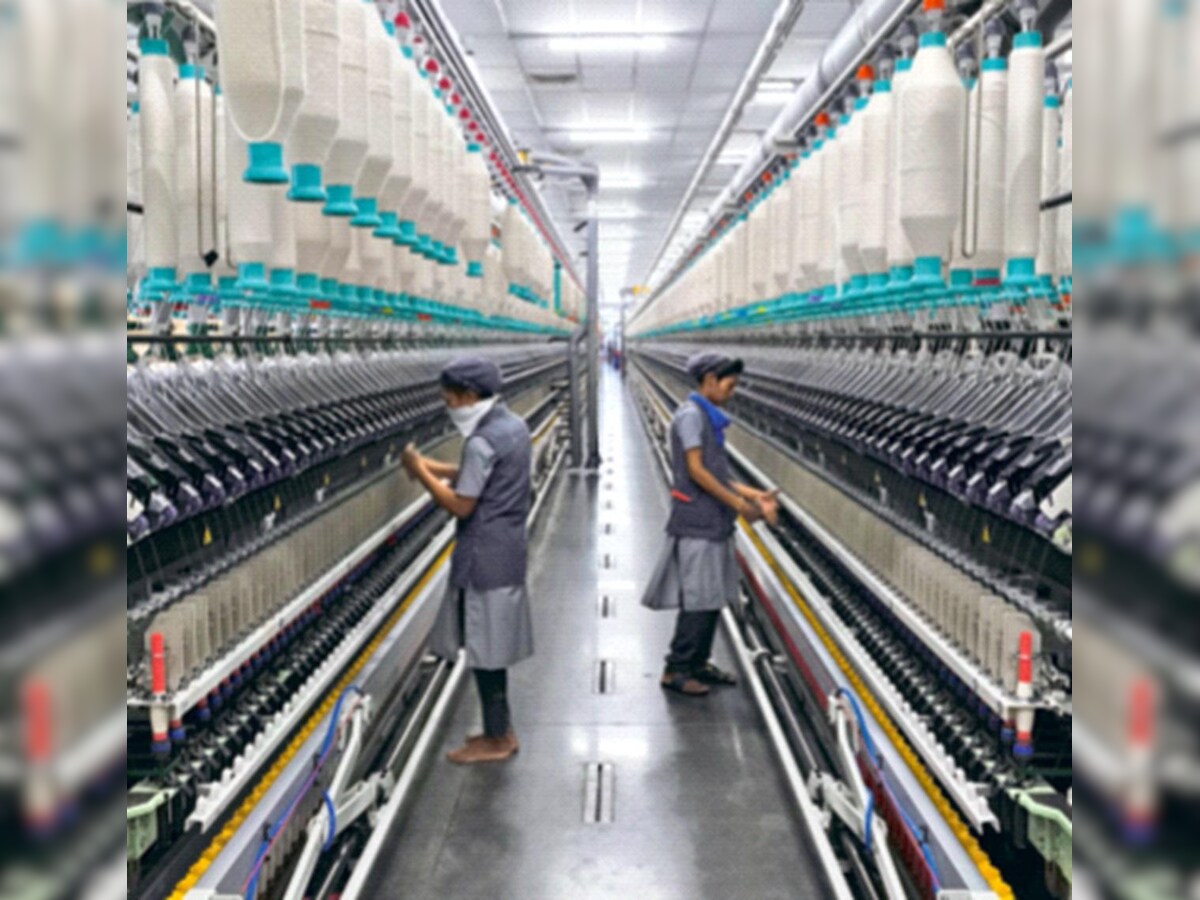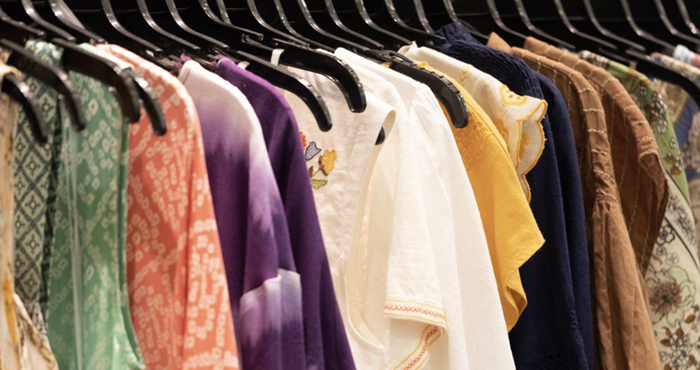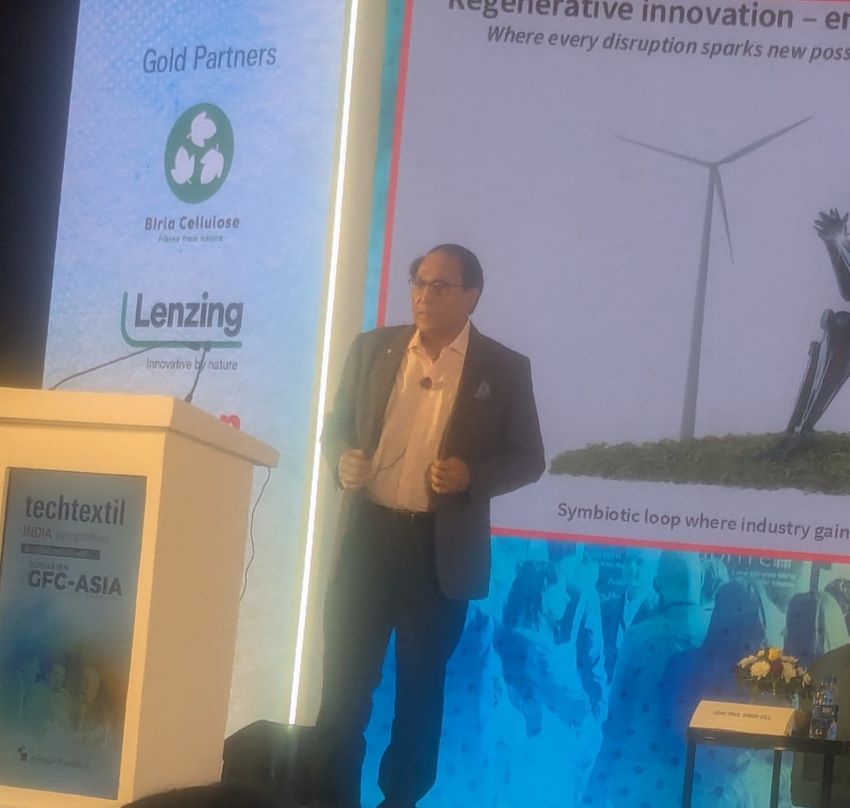FW
Colorjet will display the TXF digital textile printer at Heimtextil, New Delhi, June 20 to 22, 2017. Colorjet has manufactured the digital printer incorporating the latest Japanese technology, which imparts the printer with the power to print brilliantly and flawlessly, with reduced maintenance.
Colorjet is India’s largest manufacturer of digital printers. The TFX is primarily for home textile applications and fashion designers. Since the printer is apt for printing with all inks, whether pigment, reactive or disperse, all types of fabrics, including polyester, cotton, silk, viscose, rayon or wool, can be printed, which opens huge avenues for different applications.
The digital printer is apt for printing with pigment inks which can print practically on any type of fabric including polyester, cotton, silk, viscose, rayon or wool. Pigment printing has an advantage as the fabric does not necessarily require pre- or post-treatment, thereby saving on production times and reducing water pollution.
The TXF can also work with reactive inks for printing on to natural fabrics and also disperse inks for printing on to polyester fabrics. The printer offers speeds of up to 24 square meters per hour with pigment inks.
At the exhibition, Colorjet will give live demonstration of home textile printing on products like bed sheets, pillow covers, curtains, table covers, etc on TXF.
India’s blanket making units face a bleak future following the decision to cut the levy of import duty and GST from 29 per cent to 16 per cent on all imported blankets and fabrics. These units produce nearly 1.5 lakh mink blankets every day, out of which 15 per cent are exported to North America, Europe, Russia and Australia.
It is feared the decision to decrease customs duty and other taxes under the GST regime will shut down over 50 large scale mink blanket manufacturing units in the country as these units will find it difficult to compete with cheap imported mink blankets after the GST rollout.
They cannot compete with mink blankets imported from China as these would be cheaper by at least 13 per cent due to decreased duties on imported blankets from July 1. Jalandhar-based Shital Fibers is a mink blanket manufacturing unit that contributes around 70 per cent to India’s mink blanket exports. The company produces nearly 45,000 blankets a day.
The textile industry employs nearly six crore workers. Under the GST regime, not only the mink blanket industry will suffer huge losses but the textile, yarn and fiber industries, too, will incur losses.
Most blanket manufacturers in Panipat have now shifted to making quilt.
Asia-Pacific will be the world’s largest market for technical textiles during 2017 to 2027. Technical textiles are likely to gain traction across Asia-Pacific countries such as India and China, among others.
During this period the global market for technical textiles is projected to grow at a CAGR of 4.6 per cent. In terms of consumption, the market will grow at a CAGR of 5.3 per cent. By the end of 2017, more than 34 million tons of technical textiles will be consumed across the globe. And this number is likely to reach 57 million tons by 2027-end.
More than 50 per cent of global technical textile revenues will be accounted for by the Asia Pacific region. While the Asia-Pacific technical textile market will register rampant expansion at a CAGR of 6.8 per cent, regions such as North America, Western Europe, Eastern Europe, and Middle East and Africa will showcase sluggish growth through 2027. Sales of technical textiles in Latin America, on the other hand, are likely to depict a relatively favorable growth at 4.5 per cent CAGR.
But sluggish revenue growth is anticipated for the global technical textile market, primarily due to high prices of technical textiles as opposed to alternative fabrics and lack of awareness regarding benefits of technical textiles.
"The global intimate apparel market is expected to grow at a CAGR of more than 4 per cent during 2017-21, says the latest report by Technavio. Consumers are demanding products that are both fashionable and comfortable. The increase in customisation of bras is an important driver for the market. The recovery from the recession in 2009 and rise in demand from emerging economies, especially China, are some other market drivers. Vendors are marketing their products to different consumer segments."

The global intimate apparel market is expected to grow at a CAGR of more than 4 per cent during 2017-21, says the latest report by Technavio. Consumers are demanding products that are both fashionable and comfortable. The increase in customisation of bras is an important driver for the market. The recovery from the recession in 2009 and rise in demand from emerging economies, especially China, are some other market drivers. Vendors are marketing their products to different consumer segments. Leading intimate apparel vendors face tough competition from the designer lingerie outlets, local vendors, and private labels. The intense competition and price wars have adversely affected profit margins of vendors.
Factors contributing growth

growth of global intimate apparel market: emphasis on customisation of bras to Technavio consumer and retail research analysts highlight the following three factors that are contributing to theincrease consumer base; greater demand for plus sizes; economic recovery from recession; and more emphasis on customization of bras to increase consumer base. Intimate apparel is now not only an essential product but also a fashion apparel. Most key manufacturers add new collections regularly to attract consumers. Intimate apparel is available in multiple colors, patterns, and designs because consumers, especially teenagers, prefer matching their daily clothes with complementary lingerie.
Brijesh Choubey, a lead apparel and textile research analyst at Technavio, says manufacturers are focussed on designing products that are consumer-oriented and based on their specific needs. For example, they are manufacturing laser-cut seamless bras, molded t-shirt bras, and strapless bras because these are in high demand among fashion-conscious consumers.
Greater demand for plus sizes
Obese women generally have bigger busts and prefer wearing bras that minimise their size. This has increased sales of minimizer bras and other products such as shapewear, which provide a foundation for other clothes. New-age shapewear is pleasant to wear and does not leave any pressure marks on the body. The US is the largest market for intimate apparel, and the demand for plus size intimate apparel is high as 34.9 per cent of the population, comprising all age groups, is obese. This has resulted in increased demand for plus size intimate apparel, especially lingerie and shapewear, adds Choubey.
Economic recovery has led to a decrease in unemployment rate, an increase in income, and improvement in consumer confidence. During the recession, the frequency of consumers buying intimate apparel had decreased, and they preferred buying low-priced intimate apparel in bulk. Since then, the intimate apparel market has witnessed intense growth because of increased consumer spending. Consumers are now willing to spend extra on more comfortable, trendy, and fashionable intimate apparel.
During January to April 2017cotton imports by the US surged marginally in volume terms by 0.1 per cent on a year-on-year basis. Total cotton imports include imports of cotton yarn, cotton fabrics, cotton made-ups and cotton apparels.
Cotton fabrics and cotton made-ups recorded a boost by 3.8 per cent and four per cent in volume terms. Imports of cotton yarns and cotton apparels fell six per cent and two per cent in volume terms.
In April, only cotton made-ups recorded a growth in volume-wise imports of 2.5 per cent whereas imports of cotton yarns, cotton fabrics and cotton apparels were down by 5.7 per cent, 5.1 per cent and 1.4 per cent when compared with April 2016.
India’s apparel exports to the US fell by four per cent year-on-year in April 2017. Among the top four apparel exporting countries to the US, only China and Vietnam registered a growth in apparel exports. China, the leading exporter of apparels to the US, saw an increase of 4.4 per cent in its exports. Resultantly, the country’s share in the US apparel import market rose by 150 basis points to 29.9 per cent.
Apparel exports of Vietnam to the US rose by 11.4 per cent. The country’s market share expanded by 170 basis points to 15.2 per cent. On the contrary, apparel exports of Bangladesh and Indonesia fell by 7.6 per cent and 3.5 per cent respectively. The market share of Bangladesh contracted by 50 basis points to 6.6 per cent and that of Indonesia shrunk by 20 basis points to 6.5 per cent.
Pitti Uomo is being held in Italy, June 13 to 16, 2017.The biannual event is about men’s fashion. It has attracted buyers from around the world, designers and creative people, industry players and managers. It includes presentations, fashion shows, displays and installations.
There are 1,231 brands presenting their spring/summer collection 2018, of which 546 are from abroad. Like the previous editions, the fair is also expected to provide a strong economic boost to the surrounding area.
The peaks in the fair's numbers go hand in hand with new records in the Italian men’s fashion industry. In 2016, turnover exceeded the nine billion euro mark for the first time, registering an increase of 1.2 per cent. This was driven by suits and knitwear, which together contributed 82.4 per cent to revenues, while sales of leather wear, ties and shirts slowed. Exports continued to play a fundamental role, rising 2.4 per cent, driven by Germany, Britain, Spain, Hong Kong and Japan, while markets that slowed included the US and France.
For 2017, the turnover for the textiles and fashion sector is expected to grow 1.8 per cent. Men's clothing looks set to do even better, above all, if the US market recovers.
American children's apparel retailer Gymboree has filed for bankruptcy. The company was hurt by lower-cost competition from rival brick-and-mortar chains. It plans to cut its debt by around a billion dollars and close 375 stores.
Gymboree joins a growing list of specialty retailers and department stores that have closed thousands of locations or filed for bankruptcy this year as consumers shift toward online shopping. San Francisco-based Gymboree opened its first store in 1986 and expanded rapidly, going public in 1993. The chain failed to achieve the levels of growth it had anticipated.
Gymboree's lenders agreed to provide a 35 million dollar loan to finance the company's operations and will invest 80 million dollars in the company when it emerges from bankruptcy. Gymboree expects to move through this process quickly and emerge as a stronger organization that is better positioned in today’s evolving retail landscape. The bankruptcy was widely expected after Gymboree refused to pay some of its bills in recent months, placing the retailer on a collision course with creditors.
In the past year, Sears and Macy's have closed scores of department stores while chains such as The Limited Stores, The Wet Seal and shoe retailer Payless Holdings have filed for bankruptcy.
The speed of fashion retail these days is boosting apparel sales, especially among women’s clothing purchased online. Of the more than 7,000 new apparel products that appear online every day, nearly half are aimed at women, while only 1,750 are geared toward men, with the rest children’s, babies’ and footwear. More than half of all online women’s apparel purchases are items that have just hit the market in the previous three months, compared with 38.8 per cent of spending on the newest men’s items.
There are other gender-based shopping differences. Women tend to shop seasonally while men buy shirts and underwear all year long. Women, meanwhile, look for dresses in the spring and sweaters in the fall.
Women’s apparel sees much more turnover in response to a quicker fashion cycle than other categories of clothing. Moreover, women’s clothes purchased online span a wide range of items of clothing than men’s or children’s apparel and women’s clothes are sold in the same ratio at the high and low end.
Online apparel consumers at all levels are keen on finding deals. There has been a 4.3 per cent year-over-year price deflation in online apparel sales compared to relatively flat apparel inflation in stores.
GST may necessitate a significant tweaking of the duty drawback schemes that have helped Indian exports compete in an increasingly adverse global market. The major concern of the textile exports industry is what would happen to the various drawback benefits, and particularly how the refund mechanism would play out. Today the industry is surviving because of drawbacks.
To illustrate, the recently launched policy of refunding state levies to exporters called Remission of State Levies can't exist in the new tax regime as there would be no state taxes. If the duty drawback policy is not tweaked to accommodate GST, the textile industry is set to lose close to Rs 1,500 crores in refunds.
The Remission of State Levies scheme is being studied to make it compatible with the GST regime. It will probably undergo some changes because value added tax is being subsumed under GST. Exporters had been getting duty drawback on the central levies imposed during the process of manufacturing of goods for exports. And, beginning December, they started to get reimbursement of state levies as well.
While there would be input tax credits under GST, there are many costs which were being taken care of under the various duty drawback schemes. There are many hidden costs as well. Unless they are addressed under GST, India would lose out to neighboring countries, particularly while exporting to the European Union.
The National Council of Textile Organizations (NCTO) has filed public comments with the Office of the US Trade Representative (USTR) outlining the US textile industry’s priorities in the forthcoming renegotiation of the North American Free Trade Agreement (NAFTA).
The US textile industry welcomes President Trump’s decision to renegotiate NAFTA. It feels NAFTA is vital to the prosperity of the US textile industry. But it also feels NAFTA can be improved to incentivize more textile and apparel jobs and production in the United States, Canada, and Mexico.
NCTO says eliminating loopholes that shift production to third-party countries like China and devoting more customs enforcement resources to stop illegal third-country transshipments are two changes that would make the agreement better.
In 1994, the North American Free Trade Agreement came into effect, creating one of the world’s largest free trade zones and laying the foundations for strong economic growth and rising prosperity for Canada, the United States, and Mexico. It aims at demonstrating how free trade increases wealth and competitiveness, delivering real benefits to families, farmers, workers, manufacturers, and consumers. It has set a valuable example of the benefits of trade liberalization for the rest of the world.
NCTO is a Washington-based trade association that represents domestic textile manufacturers.

